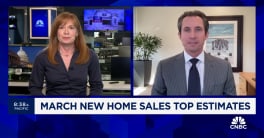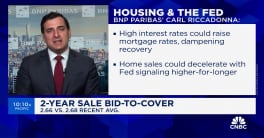Following an optimistic opening due to a somewhat optimistic labor report, all three major U.S. indexes have dropped into the red as Federal Reserve chairman Ben Bernanke calls for regulation overhaul.
As of 11:00 am EST, the S&P has dropped 0.42% to 915.7, the Dow is down 0.70% to 8453, and the Nasdaq is down 1.65% to 1730.
Investor sentiment had been riding high from Wednesday afternoon as results from the Stress Test were slowly leaked during the day. Markets then opened higher as two pieces of data beat expectations before the bell.
At 8:30 am, markets saw the number of Americans filing for jobless claims fall to its lowest level since mid-January. At the same time, first-quarter productivity came in higher than expected: the BLS measure of Nonfarm Business output per hour rose 0.8%.
Once Bernanke started speaking at the Chicago Fed’s Conference on Bank Structure and Competition at 9:30 am, gains quickly turned to losses.
“All systemically important financial firms--and not just those affiliated with a bank--should be subject to a robust framework for consolidated supervision,” Bernanke said.
The Fed chairman didn’t mention results of the Stress Tests, monetary policy, the current outlook, or inflation. Instead, he spoke about the necessity of implementing macroprudential oversight.
Data Recap:
Before the bell, the weekly Jobless Claims report showed the number of Americans who filed for initial claims in the week ending May 2 was 601,000, much less than expected by analysts. That marks the 14th straight week claims have been more than 600k, but it is also 34,000 fewer than the prior week.
The Dept. of Labor also reported that continuing claims ― the number of people receiving unemployment benefits ― rose to 6.351 million, a record high, in the final week of April. That’s an increase of 56,000 from the prior week’s figure of 6.295 million.
Noting that claims were down for the second week in a row, DeutscheBank’s chief U.S. economist Joseph LaVorgna, commented: “These declines are well after the April employment survey week so we are not changing our forecast of -650k for April payrolls, but if these levels are sustained in May, then payroll declines should moderate to somewhere in -400k vicinity.”
Also at 8:30, a Productivity and Unit Labor Costs release from The Bureau of Labor Statistics said NonFarm Business Productivity ― a measure of output per hour ― rose 0.8% in Q1. Unit labor costs rose 3.3%.
The good news there is that productivity per hour is advancing, but actual output dropped 8.2% in the quarter, and hours fell 9.0%.
Commenting on the report, IHS Global Insight’s chief economist said the report was good for businesses, but bad for employees.
“We expect productivity growth to turn sharply positive in the second and third quarters—growing at a rate of over 3%—as companies continue to slash payrolls, but output growth begins to turn positive,” he said. “As a result we expect employment growth to continue to lag output growth and for the unemployment rate to rise above 10%.”







